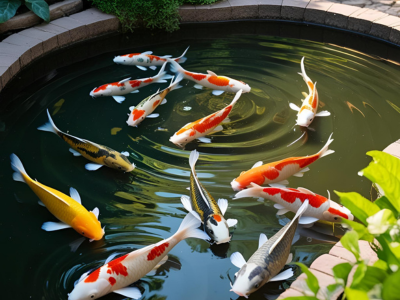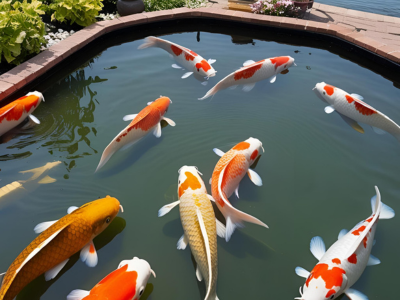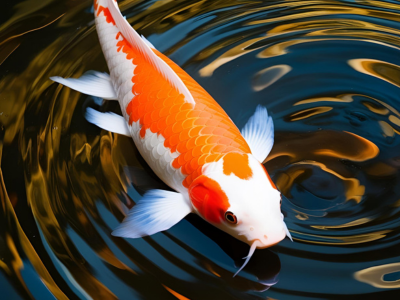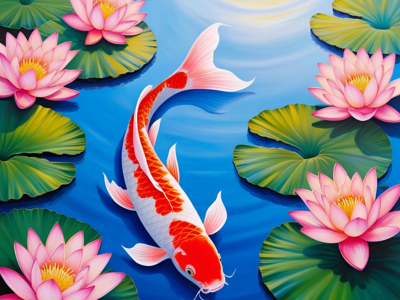Introduction to Koi Fish Pricing
How Much Are Koi Fish are a beautiful addition to any pond, but their price can vary widely depending on several factors. Understanding the costs involved is essential whether you’re a seasoned koi enthusiast or a beginner.
From the type of koi to where you buy them, numerous elements influence their price. In this guide, we’ll break down everything you need to know about koi pricing, so you can make an informed decision.
Keep reading to learn how to navigate koi costs and find the perfect fish for your pond.
When it comes to koi fish pricing, it’s not as simple as picking a pretty one and tossing it into your pond. The cost of koi varies significantly based on multiple factors, each of which adds a layer of complexity to the price tag. Let’s dive into these factors, shall we?
Quality and Grade

Quality is one of the most influential factors in determining koi prices. Koi can be classified into different grades, and the higher the grade, the more expensive the fish.
The two main categories are show-quality and pond-quality koi. Show-quality koi have flawless appearances, intricate patterns, and vibrant colors, making them ideal for competition naturally, they come at a premium.
On the other hand, pond-quality koi are more suitable for casual enthusiasts and are priced more affordably, though they still add a great touch to your pond.
New Tip: Some breeders also offer a “select” grade, which sits between pond and show quality great for hobbyists who want something special without breaking the bank.
Size of the Koi

Koi fish can grow quite large sometimes up to 36 inches or more! The larger the koi, the higher the price.
This is because a bigger koi requires more care and time to grow, and, generally speaking, they’re rarer. Smaller koi are usually less expensive but require more time and patience to grow into magnificent creatures.
It’s a bit like buying a plant small now, but with the right care, it could blossom into something much more beautiful (and expensive).
Extra Insight: Size isn’t just about length. Body shape and thickness also play a part. A koi with a full, balanced body shape often fetches a higher price than one that’s long but thin.
Breed and Coloration
The breed of koi is another determining factor. Different breeds have different price points, with the most sought-after varieties such as Kohaku, Taisho Sanke, and Showa being more expensive.
The colors and patterns on the koi also significantly affect pricing. A koi with vibrant red, white, or gold coloration is often more expensive than one with dull or mismatched colors. Essentially, koi are the art pieces of the fish world think of them as swimming paintings, each unique in its own way!
Did You Know? Metallic koi like Ogons are also highly valued for their shimmering, shiny appearance. These can stand out beautifully in a pond, especially in clear water.
Origin and Breeder

The koi’s origin plays a pivotal role in its cost. Koi bred in Japan, particularly those from renowned breeders, can cost several times more than those bred elsewhere.
This is because Japanese breeders have mastered the art of koi breeding for generations, producing fish that are not only visually stunning but also genetically superior.
Purchasing koi from such breeders may burn a hole in your pocket, but you’re paying for exceptional quality and lineage.
Added Value: Reputable breeders also offer health guarantees, proper documentation, and expert advice all of which add to the fish’s trustworthiness and value.
Age and Rarity

Older koi, especially those with established size, color, and pattern, are more expensive. Koi that have reached a certain age and have developed characteristics that make them stand out such as rare colors or unique markings are often considered valuable collector’s items.
This factor is especially important for those seeking koi with impressive growth histories or fish that are rare to find.
Pro Tip: If you’re looking for something truly special, keep an eye out for koi with one-of-a-kind markings. Some collectors even name their rare koi and keep detailed records like a family tree!
Market Demand
Koi fish pricing also fluctuates based on demand. Just like any other market, if there’s high demand for a certain breed or coloration, prices will rise. Seasonal trends can also affect pricing certain times of the year may see higher demand for koi due to events, festivals, or even just the changing seasons when people tend to focus on their ponds more.
More to Know: Online auctions and koi shows can also influence prices. A koi that wins a prize at a show might double or triple in value instantly!
Hidden Costs to Consider
Aside from the koi itself, there are other costs that many beginners forget:
- Shipping and handling for online purchases
- Quarantine setups to keep your new fish safe
- Long-term care like food, water treatments, and potential vet visits
Helpful Advice: Buying a cheaper koi but neglecting proper care can lead to higher expenses down the road. Invest in the whole setup to keep your koi healthy and happy.
Opinion
The cost of koi fish isn’t determined by a single factor but by a combination of variables. The key takeaway here is that, much like fine art or luxury goods, koi fish prices reflect their quality, rarity, and pedigree.
So, whether you’re looking for a budget-friendly pond addition or an exquisite show-stopper, understanding these factors will help you find the koi that fits both your aesthetic desires and your budget.
Final Thought: Don’t rush the buying process. Do your research, talk to breeders, and look closely at the fish. A little patience can lead you to the perfect koi that brings joy for years to come.




